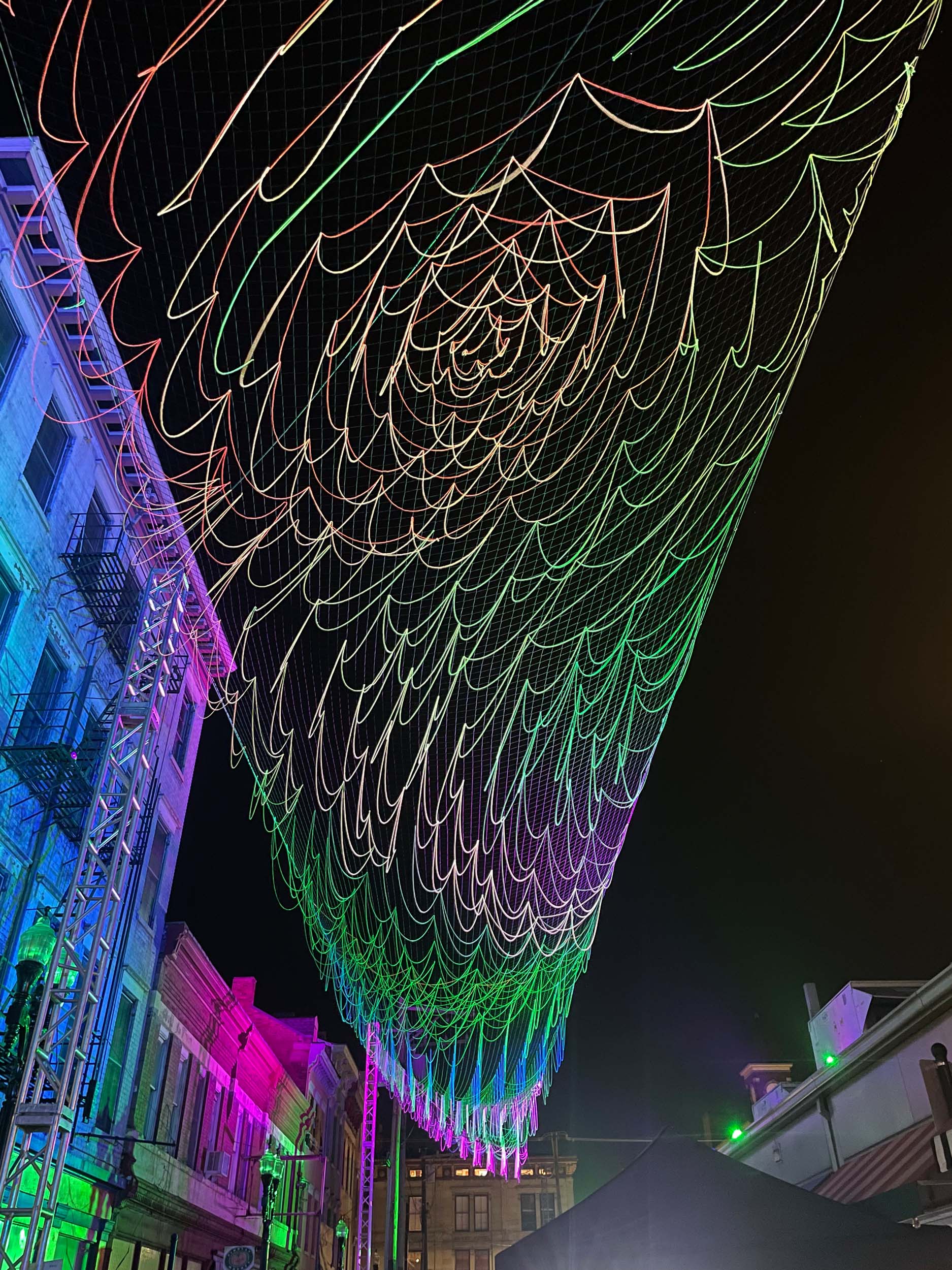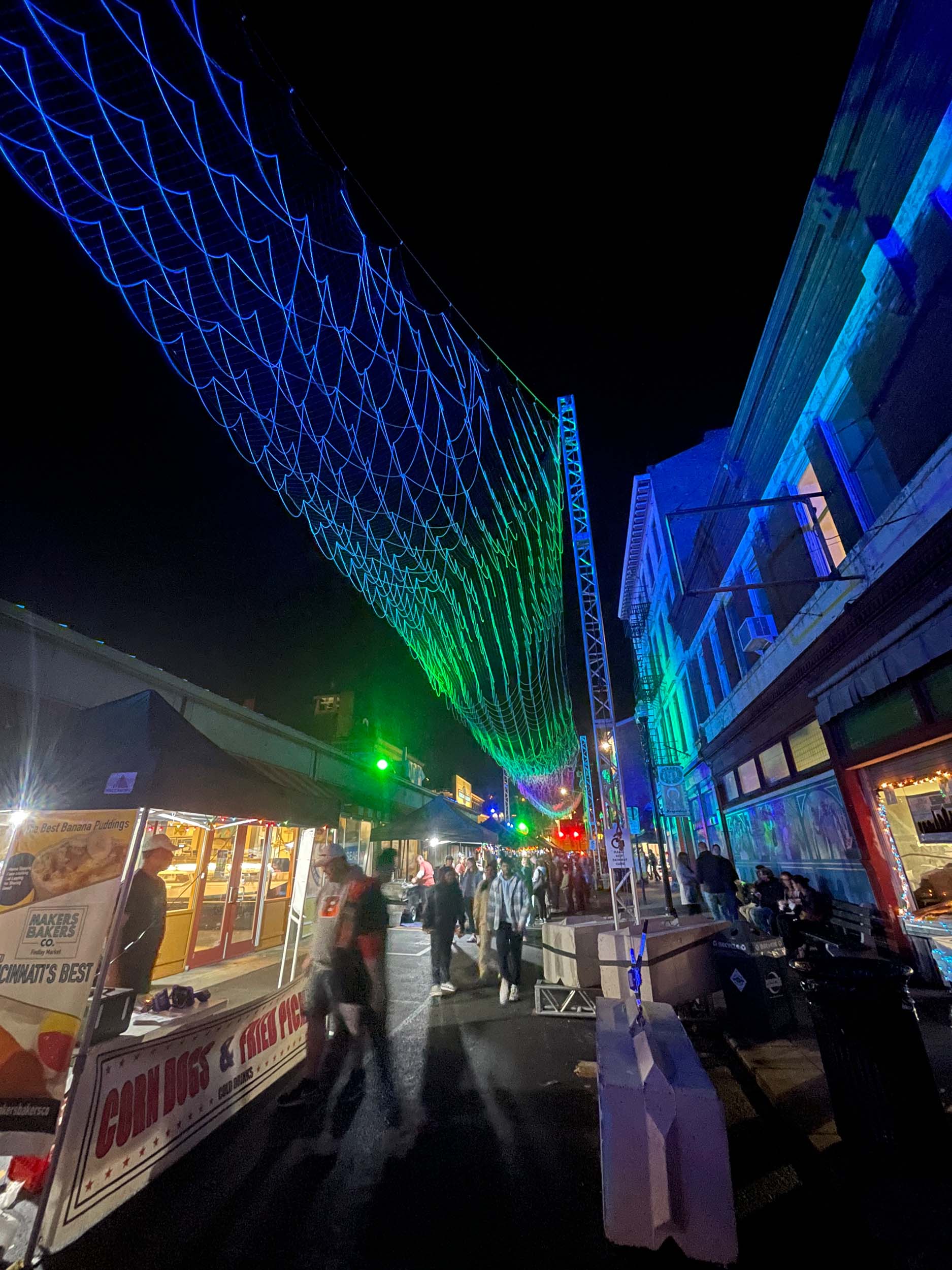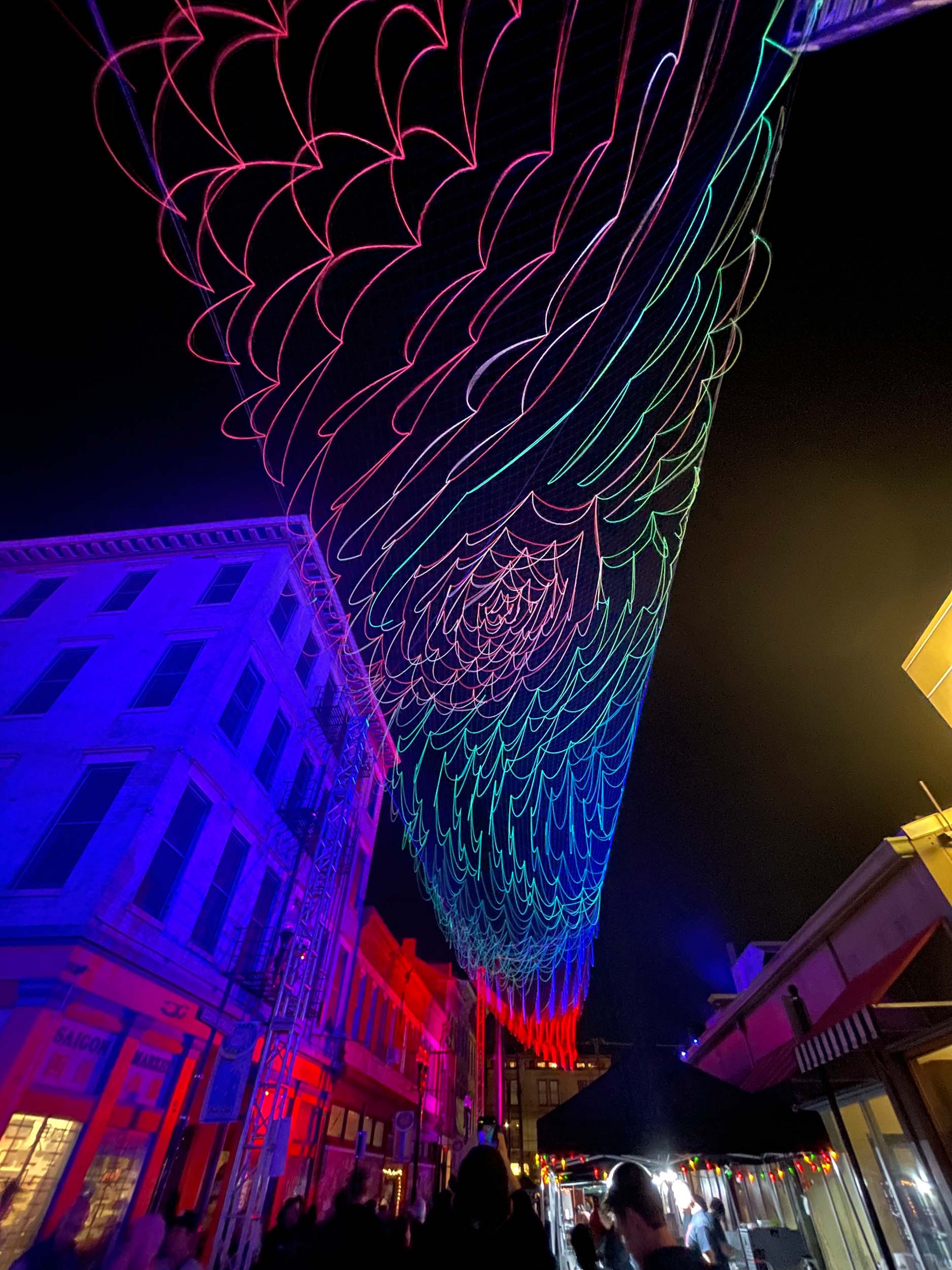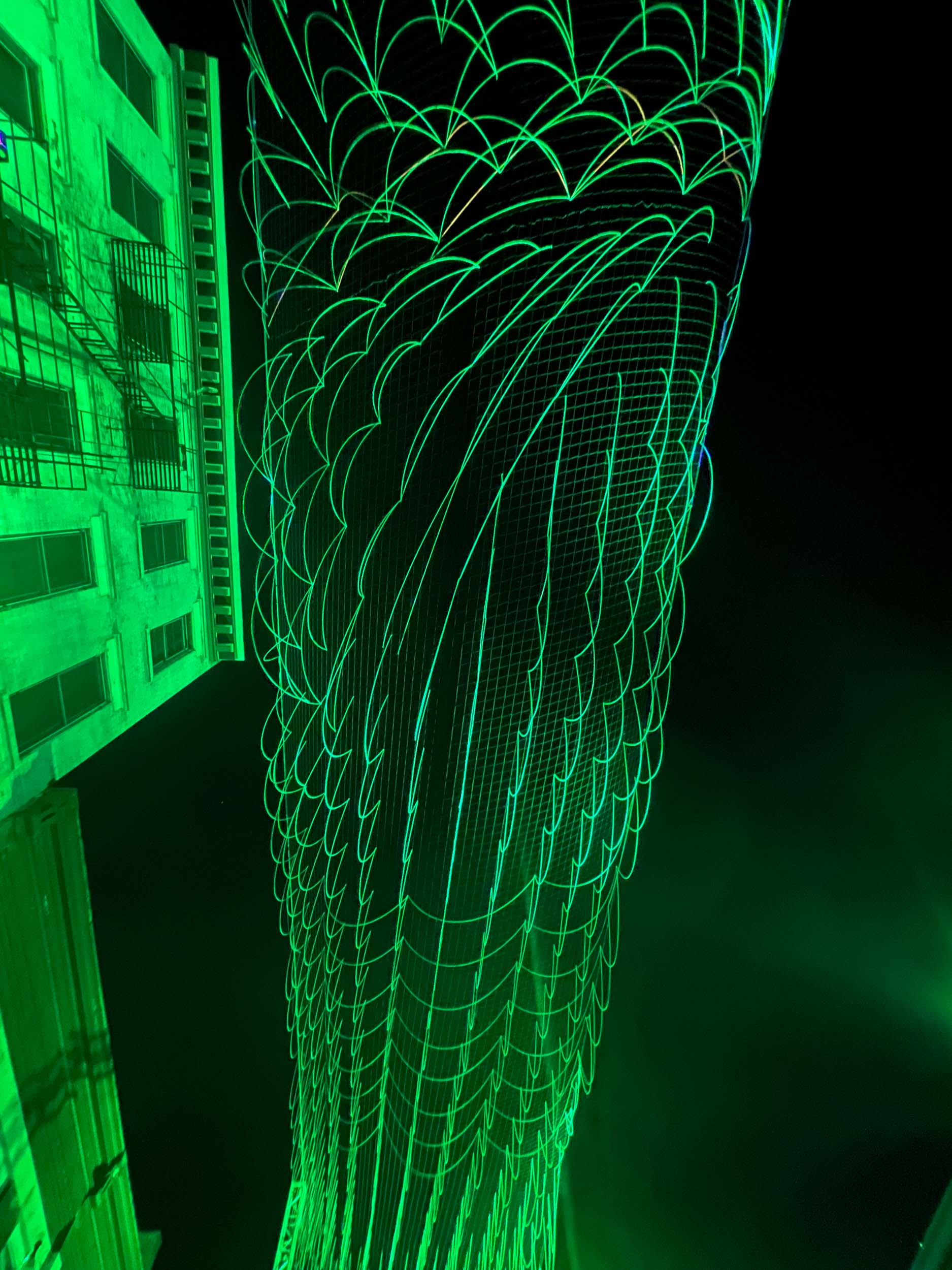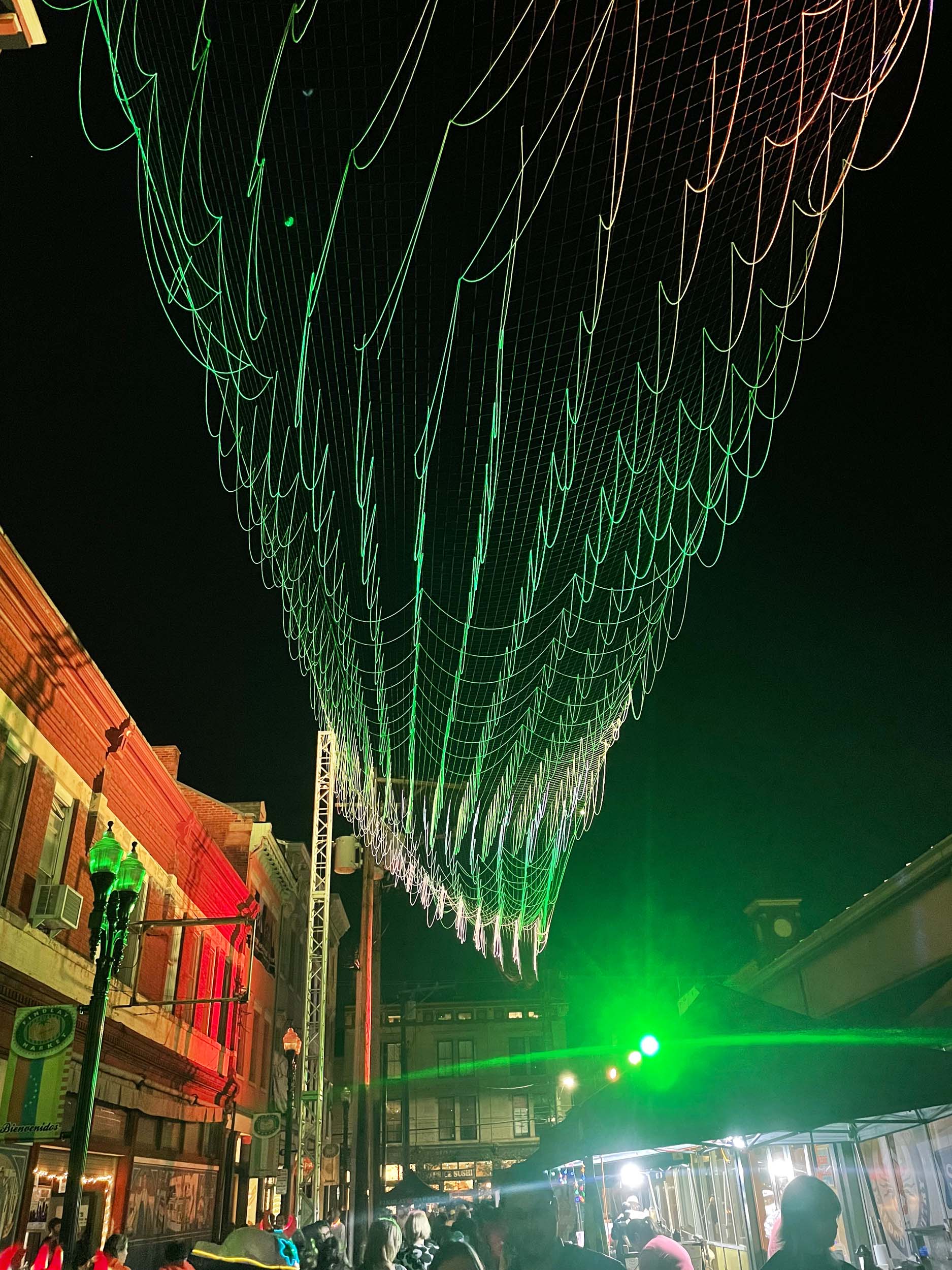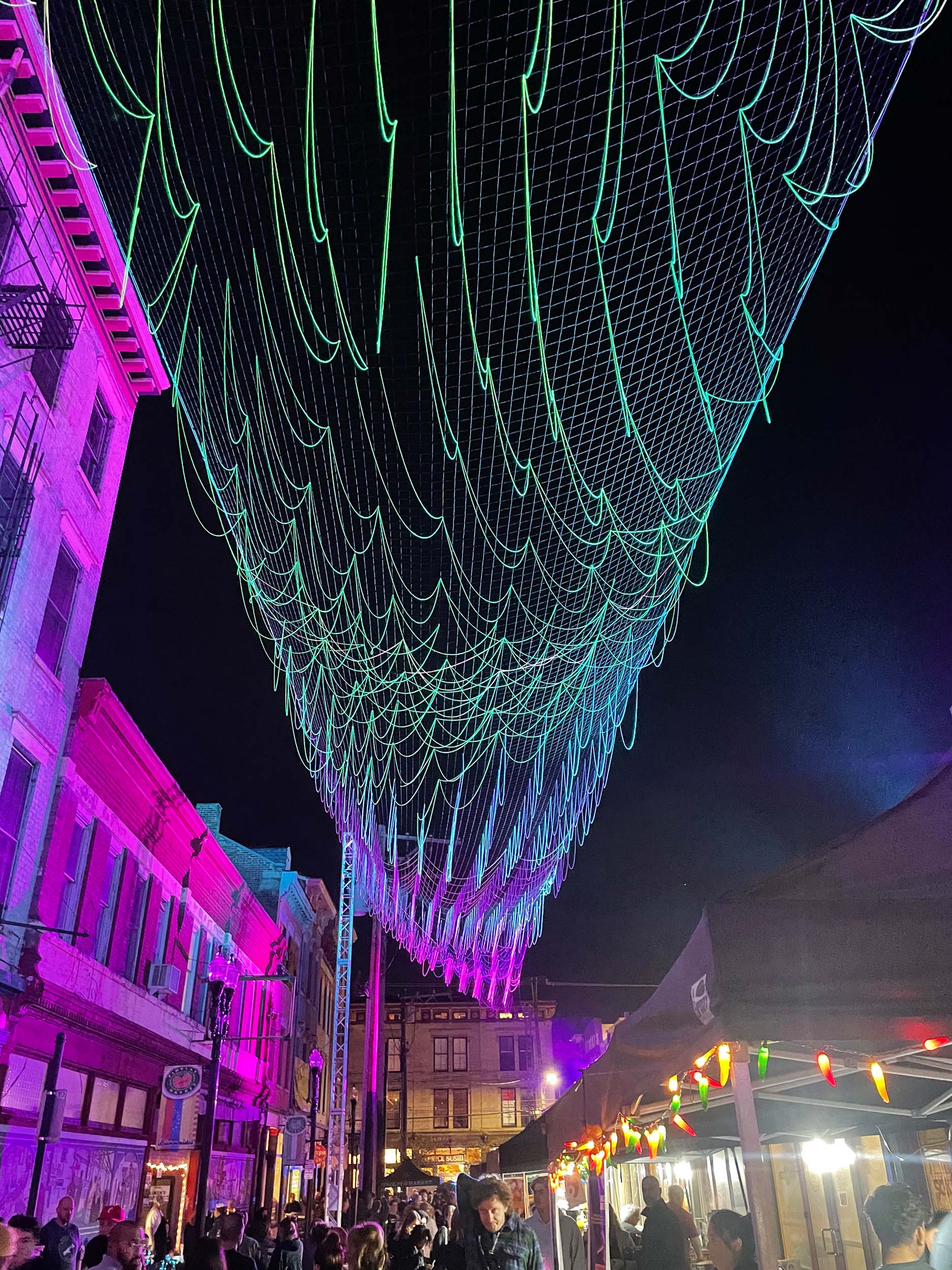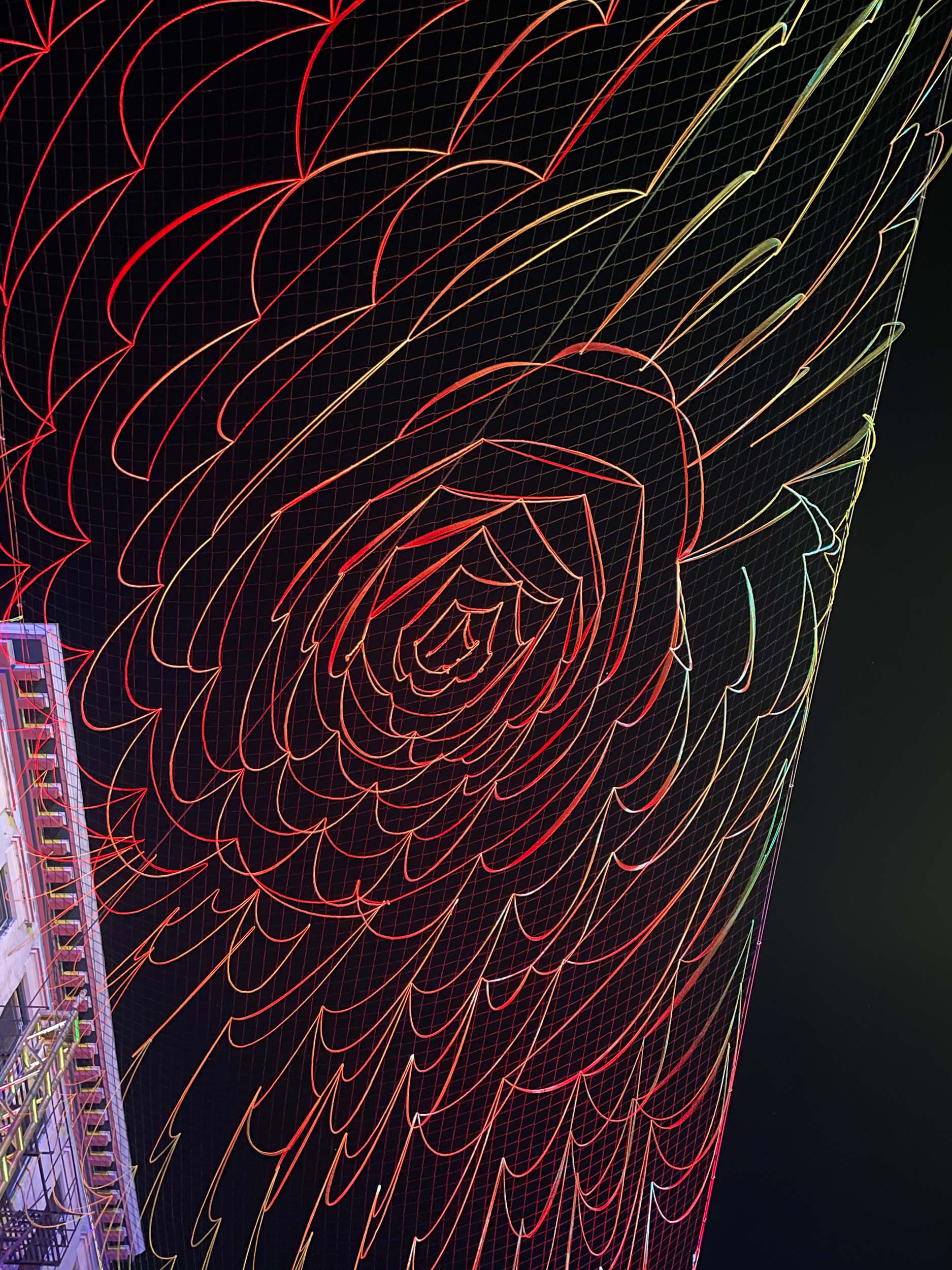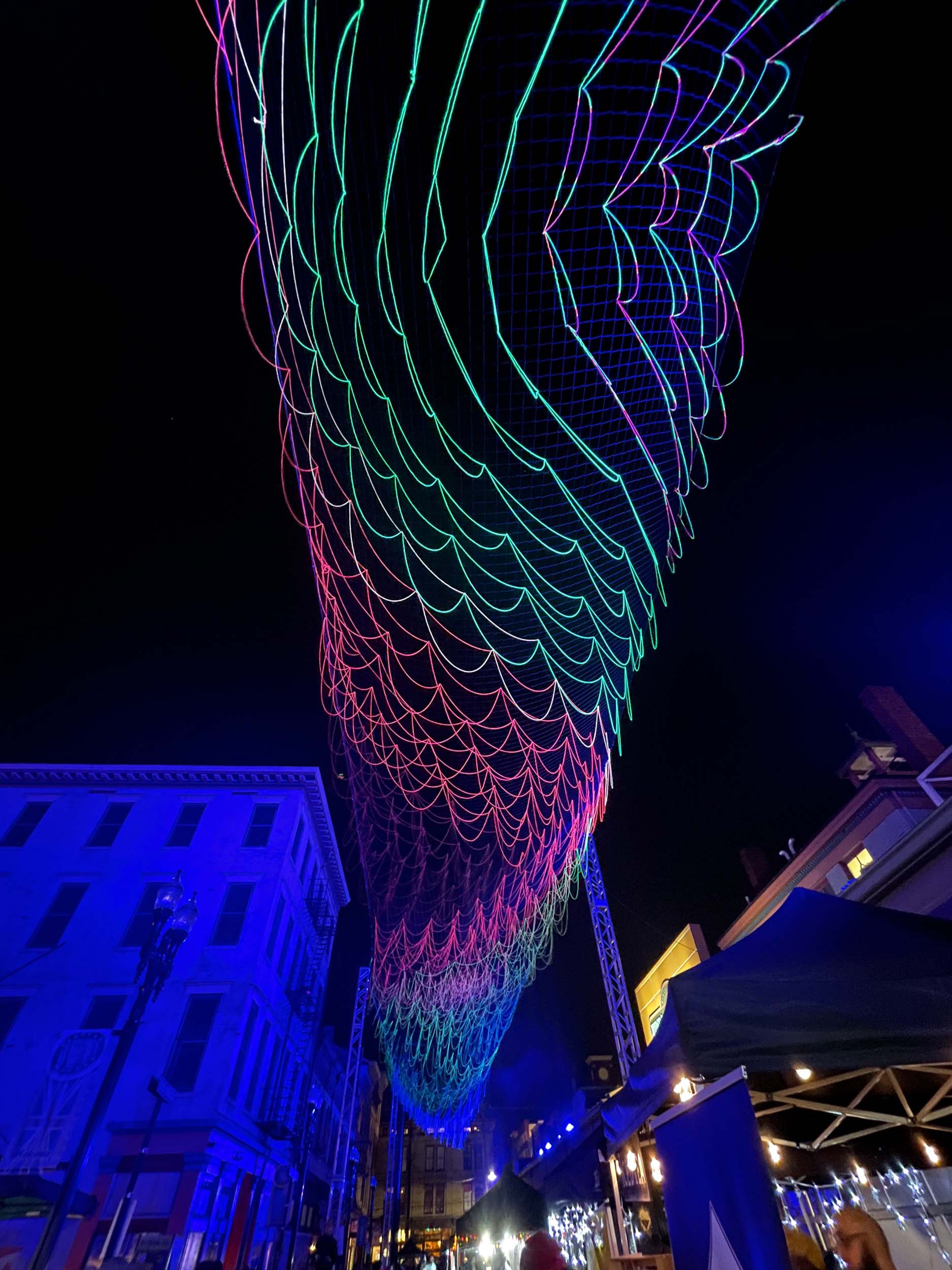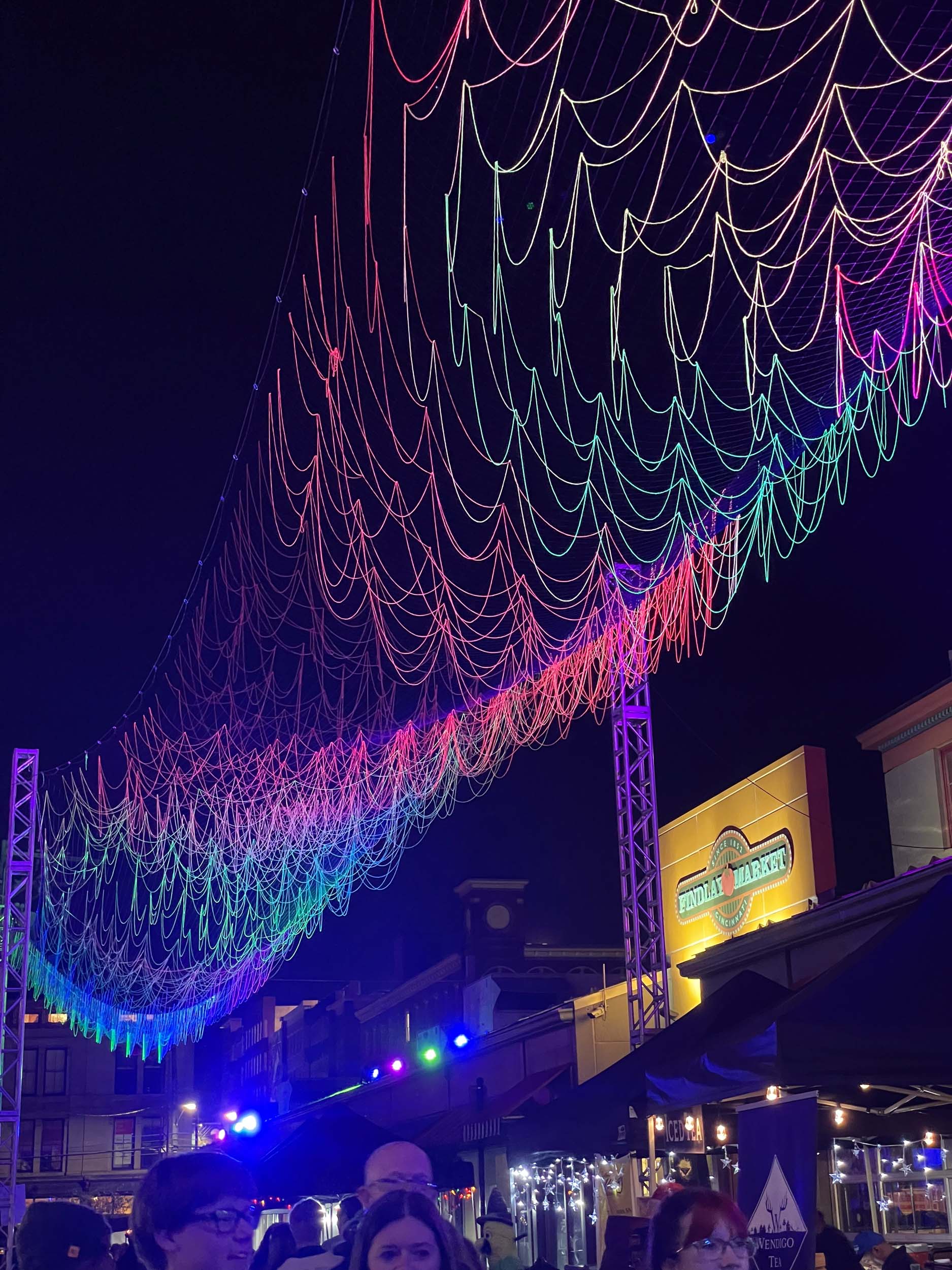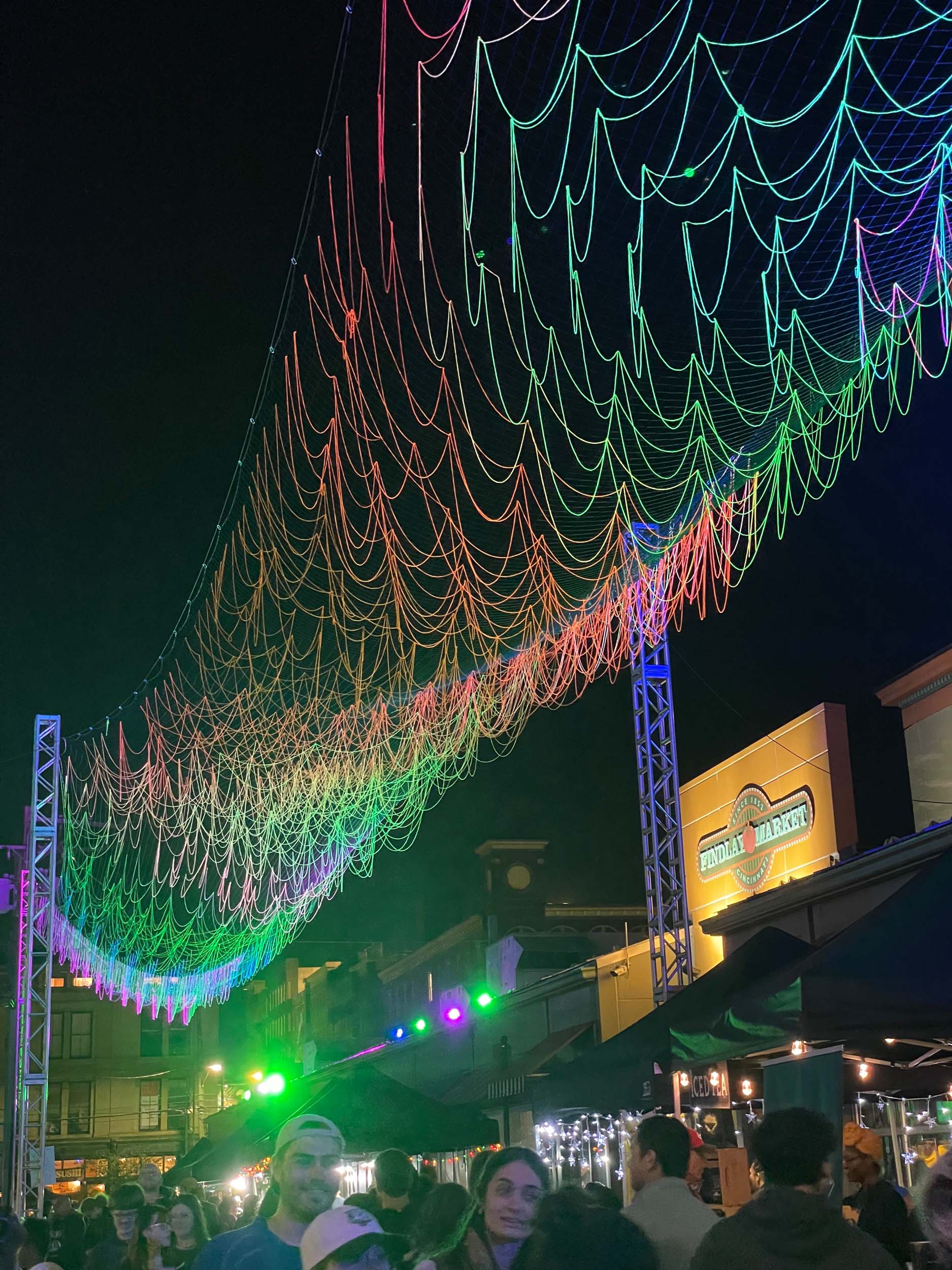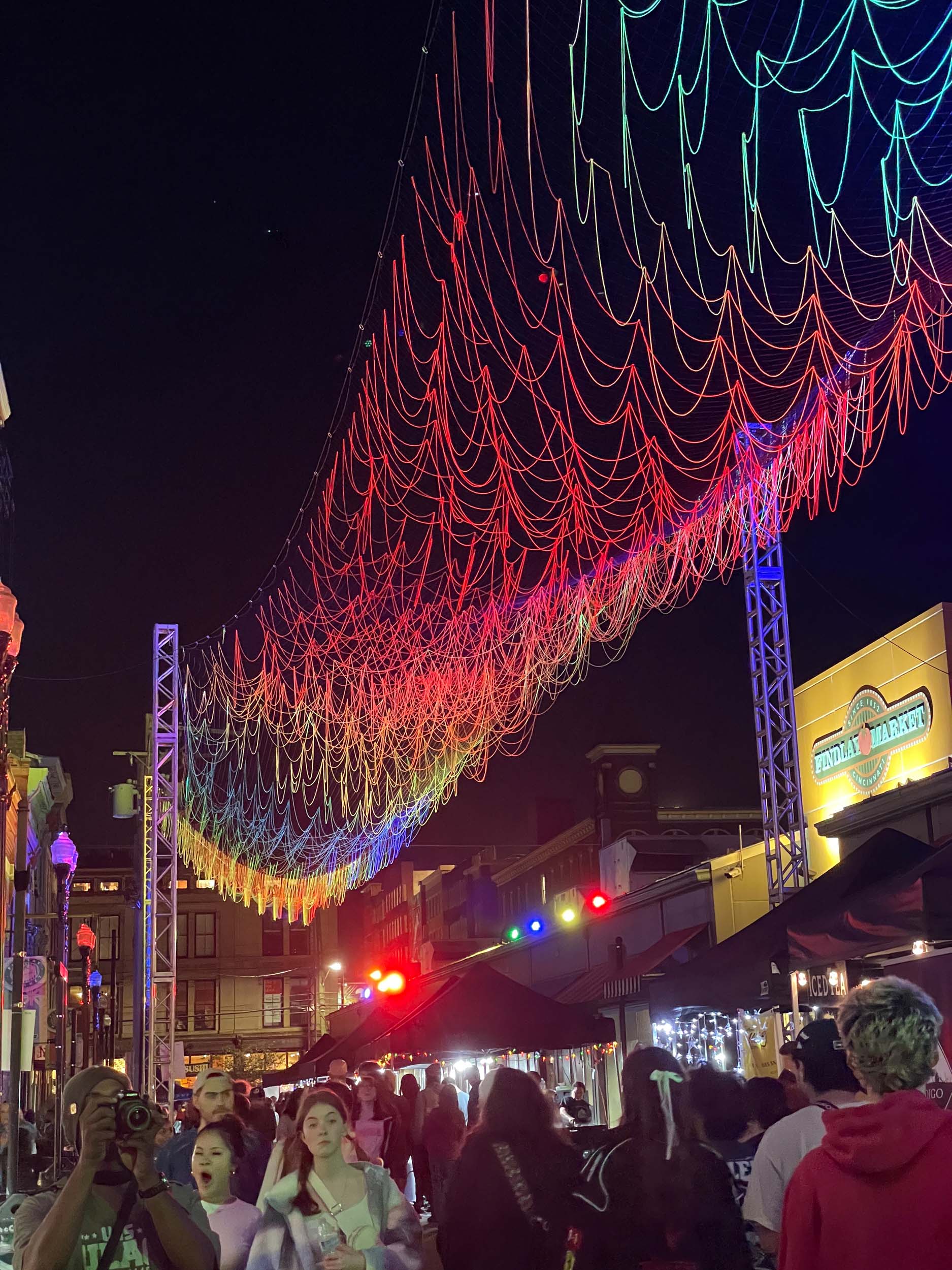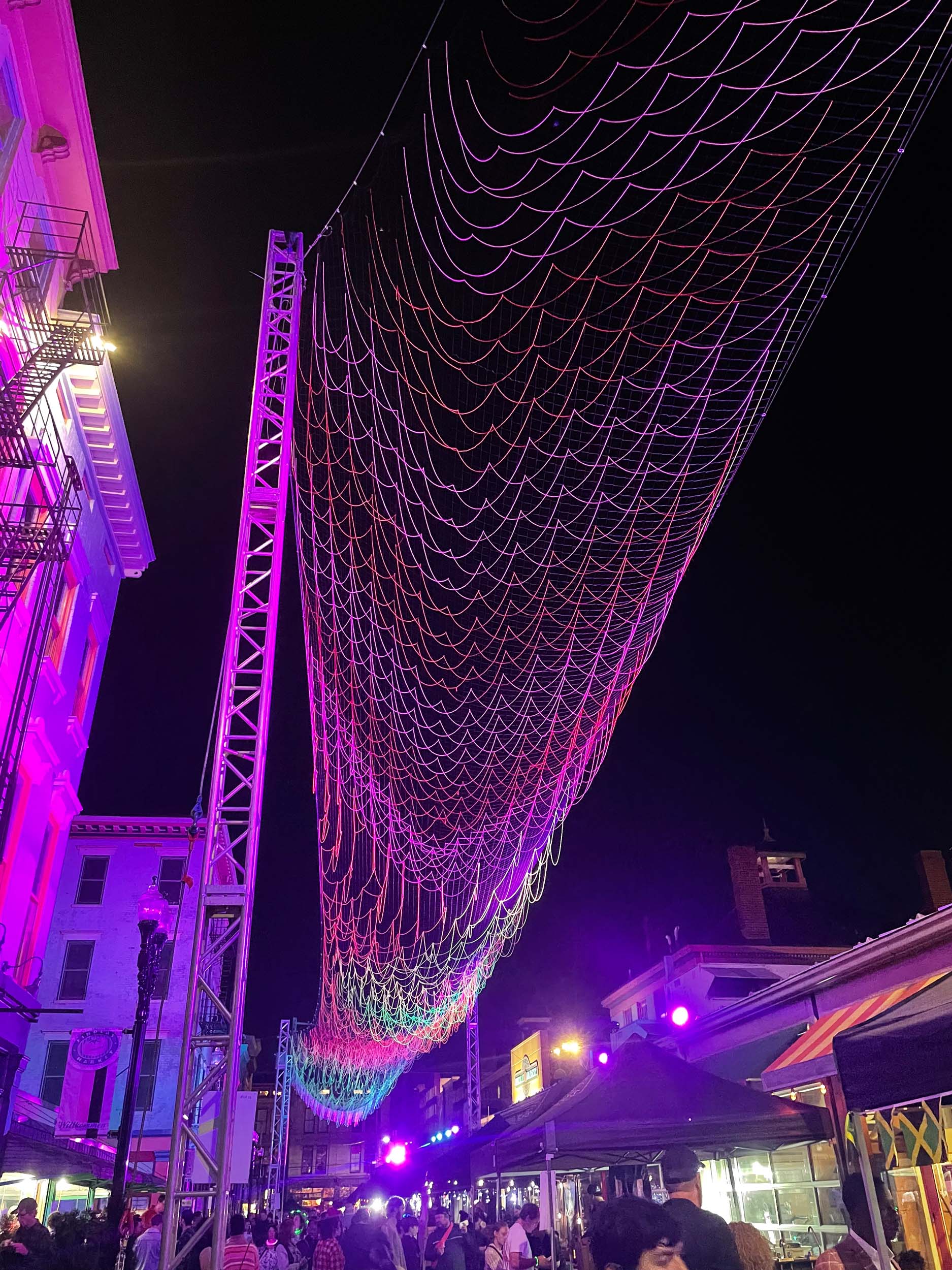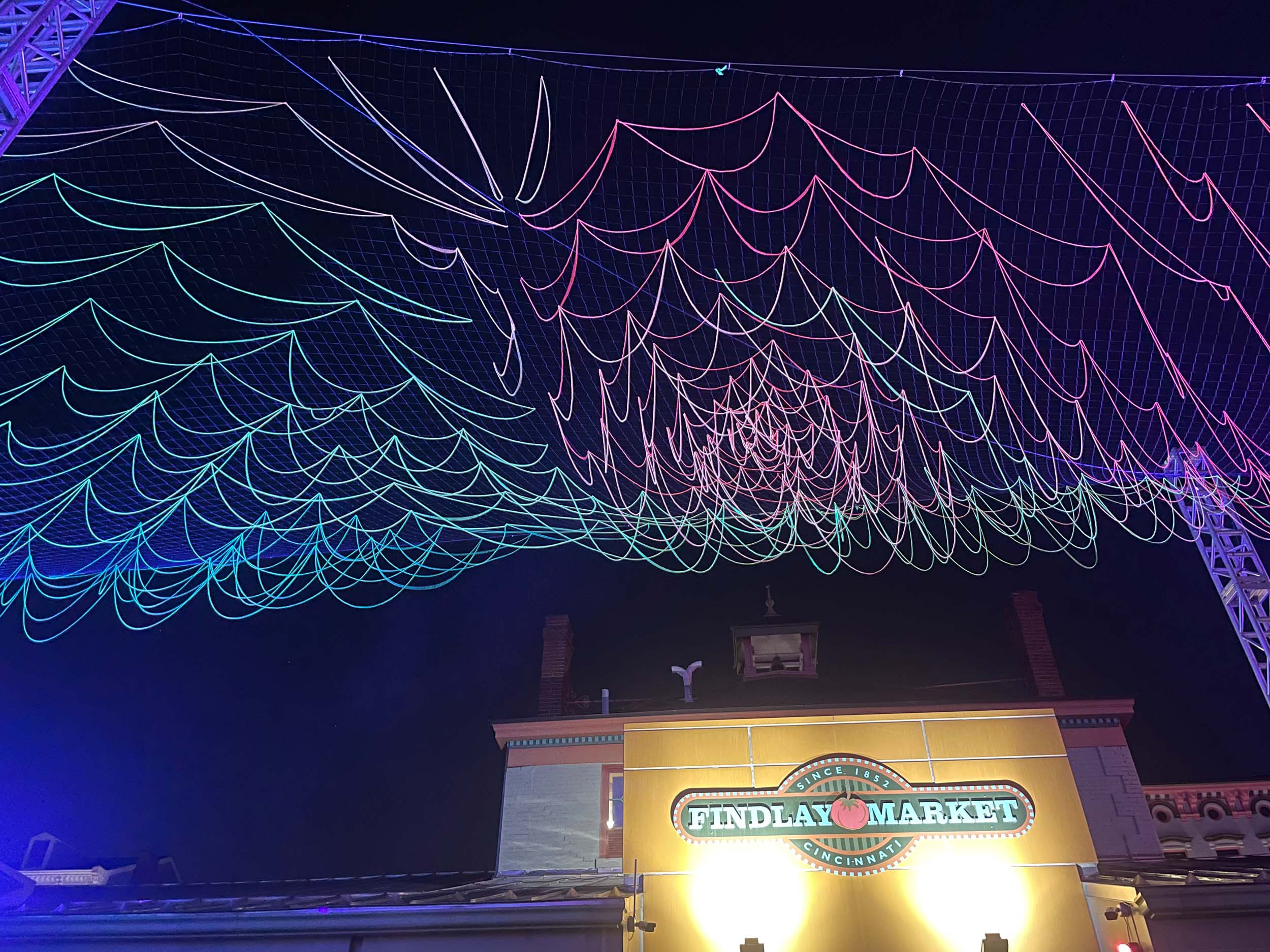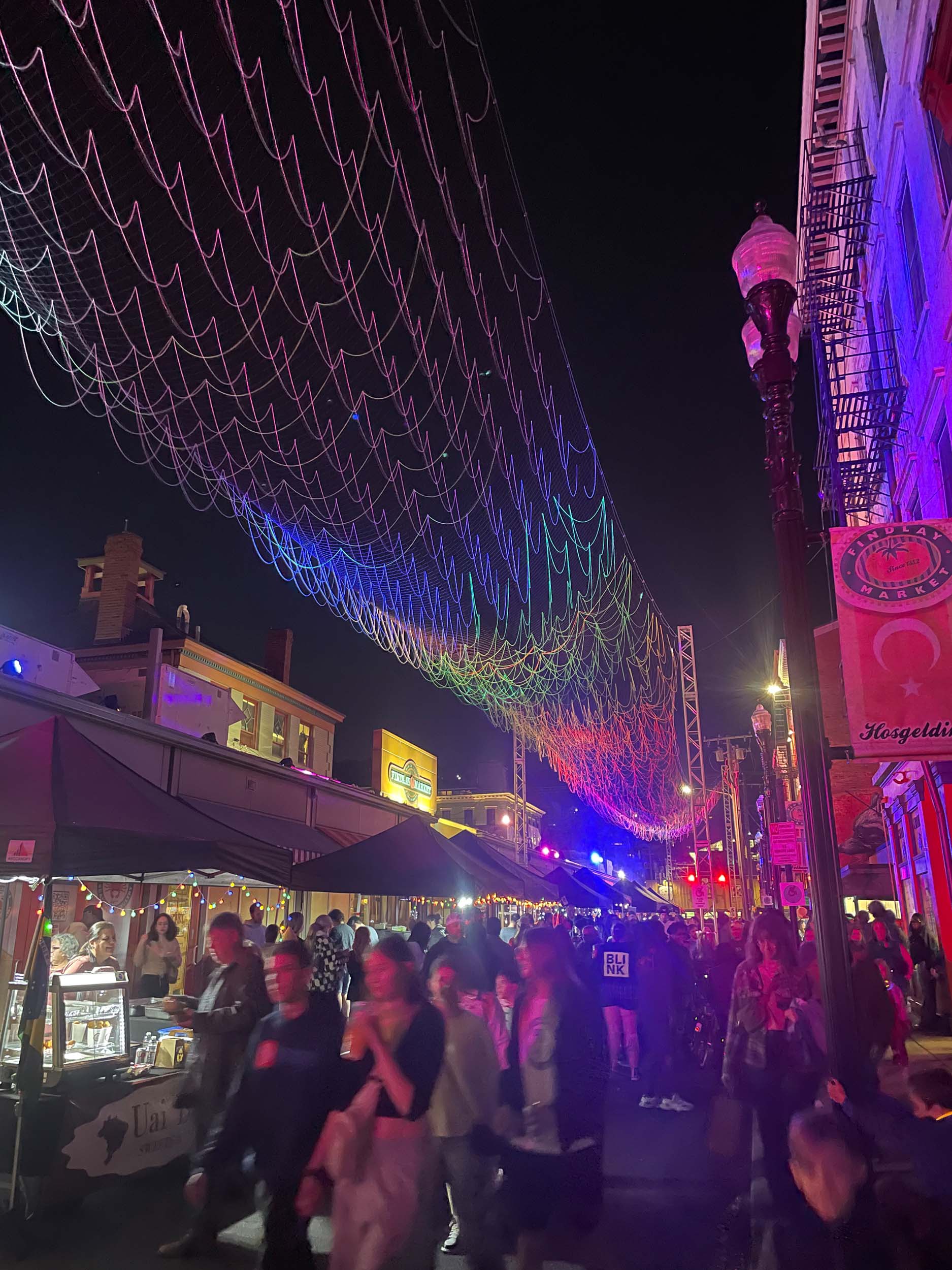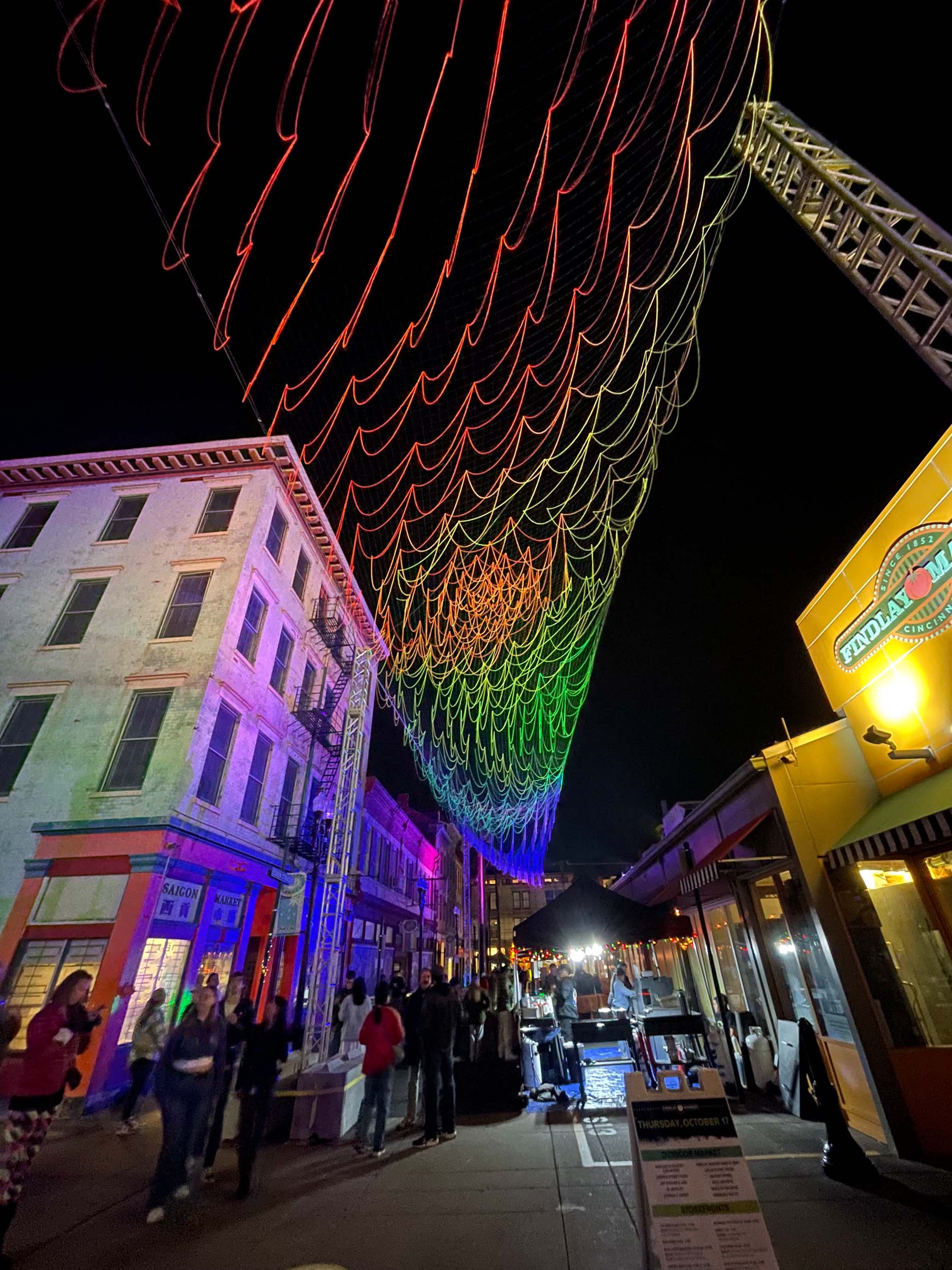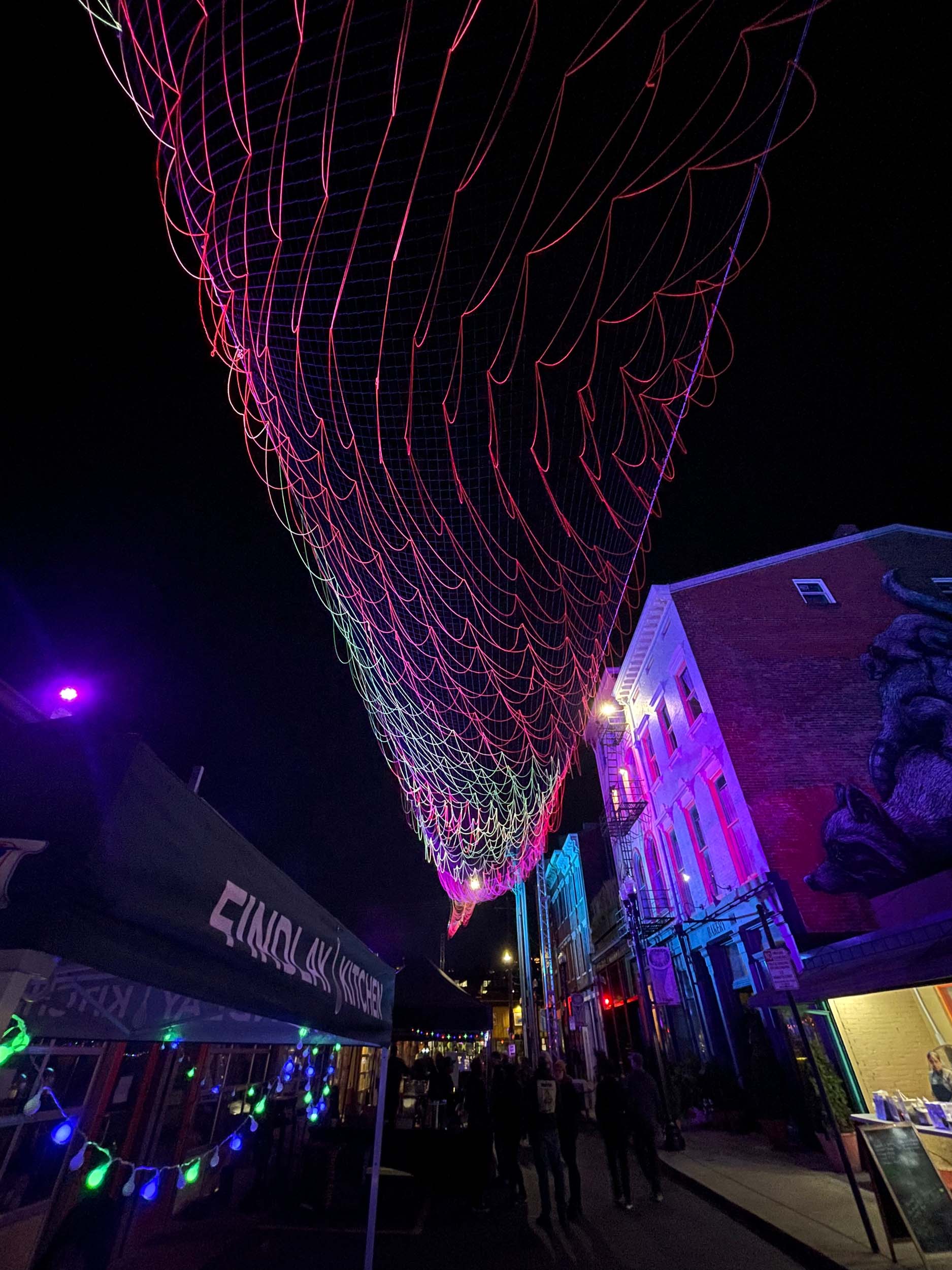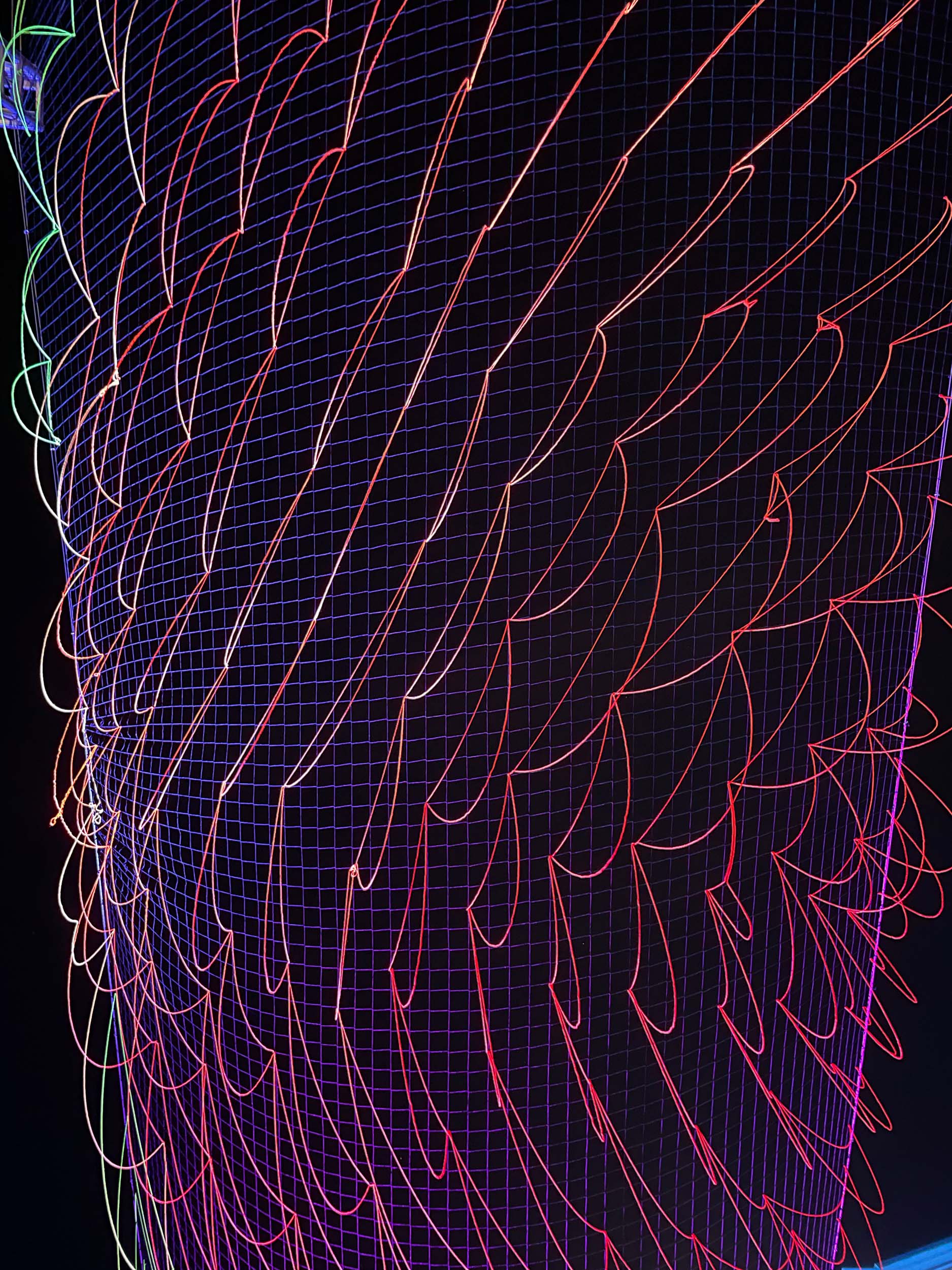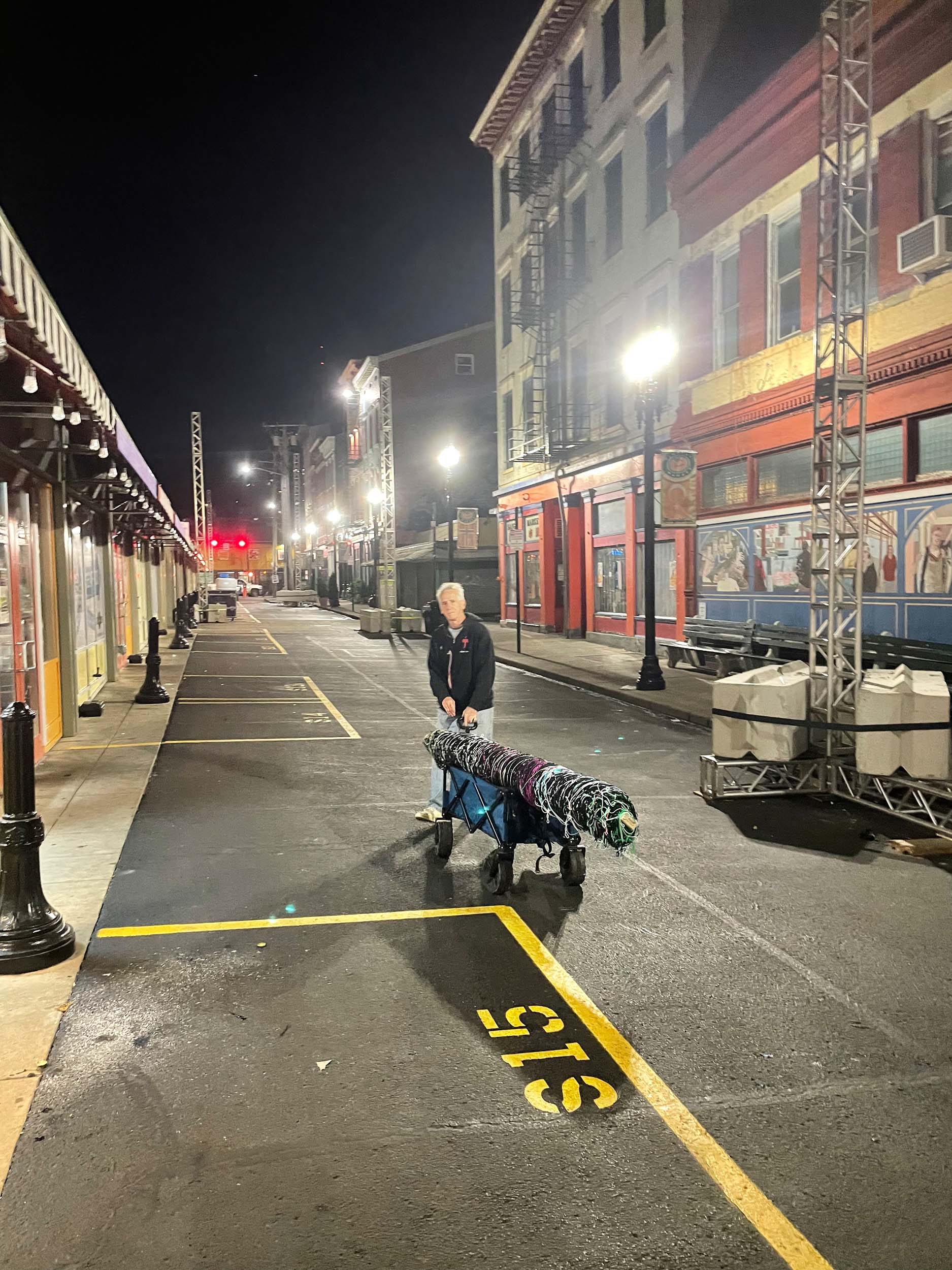BLINK Cincinnati 2024
For the 2024 edition of BLINK Cincinnati, the BLINK team asked me to take on Findlay Market for my activation and to create something special for the location. However, this location proved to be one of the most challenging options available. I love Findlay Market and have been visiting since before I can remember so there was an added level of pressure to give the market the “activation it deserves,” as the BLINK team phrased it when they asked me to take on the challenge.
My first answer was no, but after some more nudging and promises to provide necessary assets my mind was changed. Interestingly enough, Findlay was extremely hesitant at first as well. The board of directors gave the BLINK team a hard “no” shortly into planning before ultimately relenting following pressure from BLINK management and others. This left a short window for planning and approvals at an already complicated location.
At our first meeting after scouting the site I remember saying “there is absolutely nothing straightforward about doing an installation in this location,” specifically the southern side of the market where a “night market” pops up during BLINK. This space includes concerns about power lines, extreme scale/proportions (375′ long x 20′ wide), mixed ownership between Findlay vs the City of Cincinnati, a dozen or more landowners for adjacent buildings, access needs for different storefronts/market entrances, space limitations due to vendor tent placement during event, high-voltage lines for the streetcar on both ends, many bright streetlights, and on top of it all this is an active road five days per week so there were minimum height requirements for fire trucks and other emergency access vehicles. The install window was also strictly limited to BLINK week because the top priority was to minimize disruption to the market’s normal business operations.
Compounding things further, Findlay Market’s board of directors banned any touching of the market house whatsoever, which included banning all attachment points. This meant that we needed to use freestanding truss towers for all rigging points and required a way to fit (16) 1600-pound 3’x2’x6′ concrete ballasts into the 20′-wide space while still leaving space for vendor tents and a walkway. Towers on each end needed to be 30′ tall to accommodate for engineer-required sag in the support wires while still remaining above the minimum height requirement for emergency vehicles. Findlay was kind enough to allow lights to be mounted along its roof since attachment to city-owned streetlights was not permitted.
Very, very challenging.
I’ve used netting in the past as an attachment point/grid, but before BLINK 2024 I’d never used netting as a canvas to prefabricate a piece. This was born out of necessity, as I was not given permission to install early and attempting to install a piece over such a large space with such unique requirements in 3.5 days was not feasible. Instead I chose to prefabricate the entire piece and install on site with alterations to tailor it to the space.
I started with a rectangular net and worked on it in a studio space in sections approximately 40′ at a time, attaching draped yarn in a variety of patterns while leaving the entire net intact. Each attachment to the net required two knots in the yarn and total knots is unknown. Beginning in the middle I created a spiral that twists out in each direction before reaching geometric designs on each end. This central spiral was the inspiration for the entire piece, as I knew I could create a design using draped yarn that naturally avoid tangling over time. The initial idea resembled a rose or a sun. The entire piece was built around this at the center, with a prismatic rainbow color pattern extending across the length of the piece.
While installing the rectangle into the trapezoidal tower arrangement, excess netting and yarn was carefully removed in the air to trim the net to the appropriate shape.
The draped nature of the yarn created an unexpected effect which I consciously amplified after its discovery. Viewing angle relative to the yarn strands dramatically affects the viewer’s experience. Different viewing angles on the drapes of yarn meant the piece’s design was constantly shifting overhead. Looking directly up would show the attachment pattern, but viewing sections farther away created additive effects that were unpredictable. The entire piece shifted with any winds, sending ripples across the geometric and non-geometric sections and further changing the piece.
Both fluorescent and non-fluorescent yarn was used for this piece, so as the light shifted between UV and other colors entire sections would appear to fade in and out. My goal was to create a wide variety of visual ideas that somehow meld together to form a cohesive design. This is an effort to create a visual metaphor for the diversity of the market itself with its many offerings and storied past.
Unfortunately, I encountered enormous production delays due to problems with a vendor hired to provide the trussing and ballasts, and as a result the netting all needed to be installed in one day. I was able to install wire rigging between the towers on day two of build, but netting could not be installed whatsoever until Wednesday morning (event began on Thursday at 6pm).
My new 3W UV laser was incorporated but production delays meant that it was ultimately installed in a sub-optimal location and it’s overall range on the piece was limited as a result. Its effects can be seen in video at the middle section of the piece.
Removal
The entire piece was removed and rolled up onto a 2″x4″ board and can be seen below.
